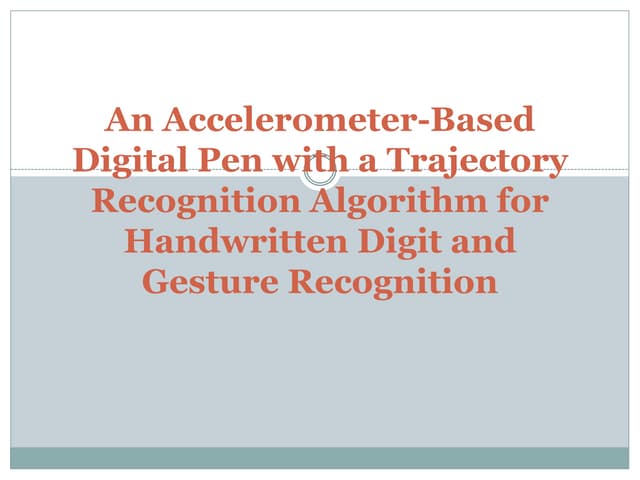How to get Accelerometer support in Windows Phone 8 Application Circuit Diagram
BlogHow to get Accelerometer support in Windows Phone 8 Application Circuit Diagram The most used algorithms for problems with time series data, such as audio and gesture recognition, are Hidden Markov Model (HMM) and Dynamic Time Warping (DTW). In this prototype case, the processor used to process the accelerometer data and the ML model, to classify a gesture, is an ATmega328P. respond to gestures using accelerometer data. The real-life implementation of this project would be to automatically detect gestures in a stream of accelerometer data and respond to user-de ned gestures. One major challenge for this implementation is processing the data so that the classi er only takes into account the segment of data that

A demonstration of the real-time gesture recognizer made in the UW Allen School course "Prototyping Interactive Systems" taught by Professor Jon Froehlich. S Gesture recognition using the accelerometer opens up numerous possibilities for creating more intuitive and interactive user experiences in mobile applications. By gathering and analyzing accelerometer data, we can recognize various gestures and trigger corresponding actions. This technology has applications in various domains, such as gaming

Accelerometer Based Gesture Recognition for Controlling a LED Circuit Diagram
The gestures are sensed using an accelerometer and sent to the ESP application running on your computer. ESP uses a simple machine learning algorithm to match the live accelerometer data to recorded examples of different gestures, sending a message back to the Arduino when it recognizes a gesture similar to one of the examples.

In the literature data gloves, hand belts, and cameras have been shown to be the most often utilized techniques of gathering user input. In many research articles, the technique of gesture recognition employs input extraction using data gloves, a hand belt equipped with an accelerometer, and Bluetooth to read hand motions. The second step (Gesture Recognition) is to recognize the gesture from a set of pre-defined gestures on 3-axis accelerometer data along with statistical parameters - mean, median, root mean square (RMS), standard deviation, variance, skewness, and kurtosis over which SVM is modeled by defining it as a multi-class classification problem. The ESP system make it easy to recognize gestures you make using an accelerometer.